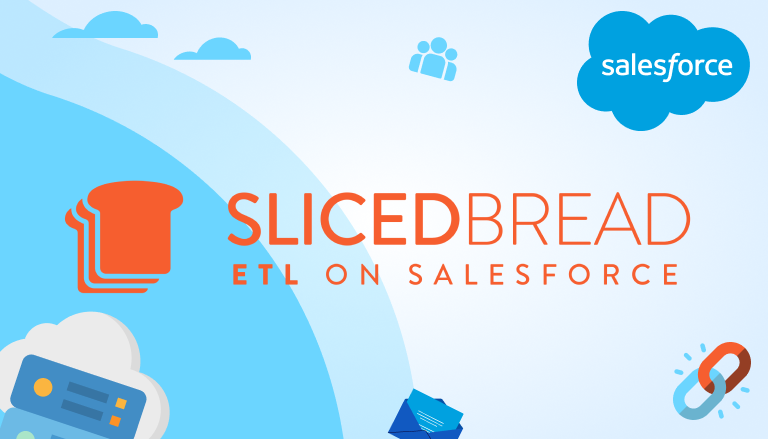
Introduction: How Do You Update/Upsert Records in Salesforce?
Handling large amounts of data in Salesforce is a challenge many businesses face. Whether it’s updating customer details, merging duplicate accounts, or changing the status of opportunities, doing this manually can be exhausting and lead to mistakes. As a company grows, the data piles up, making it harder to keep everything organized and up-to-date. This is why having efficient ways to update or upsert records in bulk is so important.
Salesforce provides some mass export files from Salesforce tools, like the Data Loader and Data Import Wizard. However, these native tools have their limits, especially when dealing with complex data or large volumes. That’s where a more advanced solution like Sliced Bread ETL comes into play. This tool simplifies the process, automating bulk updates, reducing errors, and freeing up time for more important tasks.
If your business is also dealing with large data migrations, a Salesforce data migration tool can be key to streamlining the process. Tools like Sliced Bread ETL can also assist with the mass export of files from Salesforce, ensuring all your records are up-to-date across platforms.
For businesses dealing with large volumes of Salesforce data, adopting more advanced solutions, like Sliced Bread ETL or other Salesforce data management tools, is a smart move. It simplifies the bulk update process and helps ensure that your data remains accurate and reliable.
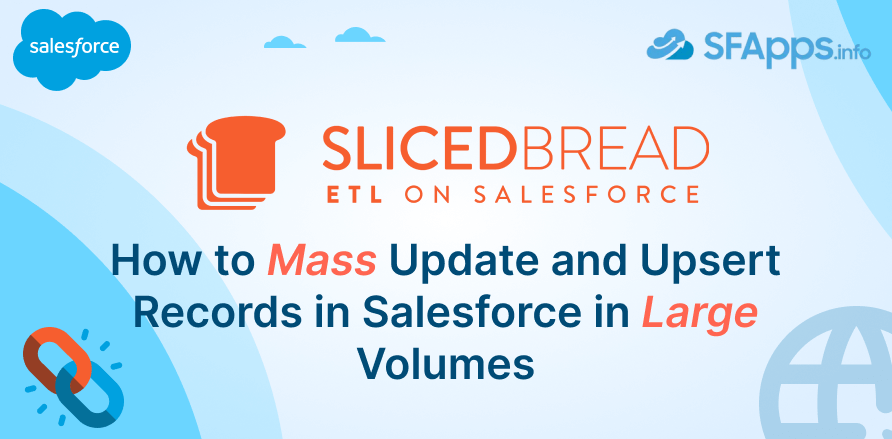
Understanding Mass Updates/Upserts in Salesforce
When managing data in Salesforce, there are often times when you need to update or upsert large numbers of records at once. This could involve refreshing customer contact information, modifying account statuses, or consolidating data across multiple sources. But what exactly is the difference between an update and an upsert?
- Update: In Salesforce, updating a record means modifying existing data without creating new entries. For example, if you have outdated contact details, an update would correct the information for those specific records.
- Upsert: This is a combination of an update and an insert. When you upsert a record, Salesforce will first check if the record already exists. If it does, it updates the existing data; if not, it creates a new record. This feature is especially useful for keeping data consistent across different platforms without creating duplicates.
Common Use Cases for Mass Updates/Upserts
- Accounts: Businesses often need to refresh account details, such as company names, contact info, or account statuses. Using a bulk update/upsert process helps ensure that your Salesforce data is current without having to manually edit hundreds of accounts one by one.
- Opportunities: Sales teams frequently need to adjust opportunity stages, amounts, or close dates for large numbers of opportunities. Rather than doing this manually, mass updates/upserts can save time and keep everything in sync.
- Contacts: Whether it’s correcting email addresses or updating phone numbers, keeping contact records up-to-date is crucial for maintaining effective communication.
Performing these updates manually, especially with large datasets, can be slow and cause errors. That’s why Salesforce offers native tools like the Data Import Wizard and Data Loader to help streamline these processes.
However, these tools have their limits when handling large or complex datasets. For instance, Data Import Wizard is best suited for smaller tasks (up to 50,000 records) and can struggle with more intricate updates. Data Loader is better for larger datasets but still requires significant manual setup and doesn’t handle complex transformations as easily as advanced tools.
This is where solutions like Sliced Bread ETL shine. The ability to manage bulk updates/upserts more effectively provides the automation, error handling, and flexibility that many businesses need to manage their Salesforce data efficiently.
How Sliced Bread ETL Simplifies Bulk Updates and Upserts
Dealing with bulk updates/upserts in Salesforce can feel overwhelming, especially when you have a lot of data to manage. Native tools like the Data Import Wizard and Data Loader are helpful, but they can fall short when you need to handle large datasets or automate repetitive tasks. This is where Sliced Bread ETL makes a big difference.
1. Automation for Updates/Upserts
One of the standout features of Sliced Bread ETL is its ability to automate the entire process of bulk updates and upserts. Automating this process means you can schedule tasks, and they’ll run without manual intervention.
For example, you can automate a task in Sliced Bread by using simple Apex code or Flow in Salesforce. Let’s say you want to run a recipe automatically. You can insert a new Bread and start the process automatically:
insert new slicedbread__Bread__c(
Name = ‘{!bread_number} | My Bread’,
slicedbread__Status__c = ‘Start Slicing’,
slicedbread__Recipe_Name__c = ‘My_Recipe’
);
For recipes that require a file, the automation process works a bit differently. You create the recipe (bread), attach the file, and then start the process:
slicedbread__Bread__c bread = slicedbread__Bread__c(
Name = ‘{!bread_number} | My Bread’,
slicedbread__Recipe_Name__c = ‘My_Recipe’
);
insert bread;
bread.slicedbread__Status__c = ‘Start Slicing’;
update bread;
This automation saves time by eliminating the need for manual intervention each time you need to update records.
If your recipe involves virtual fields, you can set them using a JSON format. Here’s an example:
insert new slicedbread__Bread__c(
Name = ‘{!bread_number} | My Bread’,
slicedbread__Status__c = ‘Start Slicing’,
slicedbread__Recipe_Name__c = ‘My_Recipe’,
slicedbread__Virtual_Fields__c = ‘{“Bread.Campaign__vf”: “7017a0000015vxnAAA”}’
);
Currently, custom fields in Bread aren’t supported, but they are planned for future updates.
You can also schedule recipes to run at specific intervals using Anonymous Apex. Here’s how you can schedule a recipe to run every two hours starting at midnight:
slicedbread.Api.scheduleRecipe(‘0 0 0/2 1/1 * ? *’, ‘Generate_One_Account’);
Or, to schedule a recipe with virtual fields:
slicedbread.Api.scheduleRecipe(‘0 0 0/2 1/1 * ? *’, ‘Generate_Contacts’, new Map<String, Object>{‘Bread.Number_Of_Slices__vf’ => 10});
This automation capability simplifies repetitive tasks, freeing up time for more important activities.
2. Handling Large Datasets with Ease
Updating or upserting large datasets is where many tools struggle, but Sliced Bread ETL handles this easily. It can manage large files (up to 2GB), which means you can update or upsert thousands, even millions, of records at once. Whether you’re dealing with customer data, sales records, or other important information, Sliced Bread ETL processes it quickly and efficiently without causing delays.
3. Error Handling and Data Validation
One of the most important features when dealing with large data updates is making sure everything is accurate. Sliced Bread ETL comes with built-in error detection and data validation tools. This means that before anything is updated or upserted, the system checks for errors, helping to avoid issues like missing or duplicated data. You can also take a look at DataGroomr, it helps teams clean, verify, and maintain data accuracy with AI-powered automation. Find out how in the: DataGroomr Review – AI Salesforce Deduplication, Verification, and Data Standardization Tool. This way, you can be confident that your Salesforce data stays clean and reliable.
4. Advanced Data Transformation
When you update or upsert data, it’s not just about moving information from one place to another. Sometimes, you need to clean or change the data before it goes into Salesforce. Sliced Bread ETL makes this easy with its advanced transformation capabilities. You can format, merge, or even perform calculations on your data to make sure it fits perfectly in Salesforce. For instance, if you need to combine multiple sources of sales data into one clean file, Sliced Bread ETL handles this smoothly.
5. User-Friendly Interface
A major benefit of Sliced Bread ETL is that it’s designed to be easy to use. You don’t need to be a tech expert to set up mass updates or upserts. Its drag-and-drop interface allows users to create workflows (called “recipes”) without writing any complex code. This is especially helpful for small businesses or teams that may not have a dedicated IT department.
In summary, Sliced Bread ETL offers powerful solutions for handling bulk updates/upserts in Salesforce, making it faster and more accurate. By automating repetitive tasks, handling large datasets efficiently, and ensuring data accuracy, businesses can save time and reduce errors.
How to Mass Update Records with Sliced Bread in Salesforce: A Step-by-Step Guide
Step 1: Check Permissions and Open the Sliced Bread App
- Ensure Correct Permissions: Before starting, confirm that your User has the correct permissions. Navigate to user settings and verify that you have either “Sliced Bread Admin” or “Sliced Bread User” permissions, as shown in the image. Without these, you won’t be able to perform bulk updates.
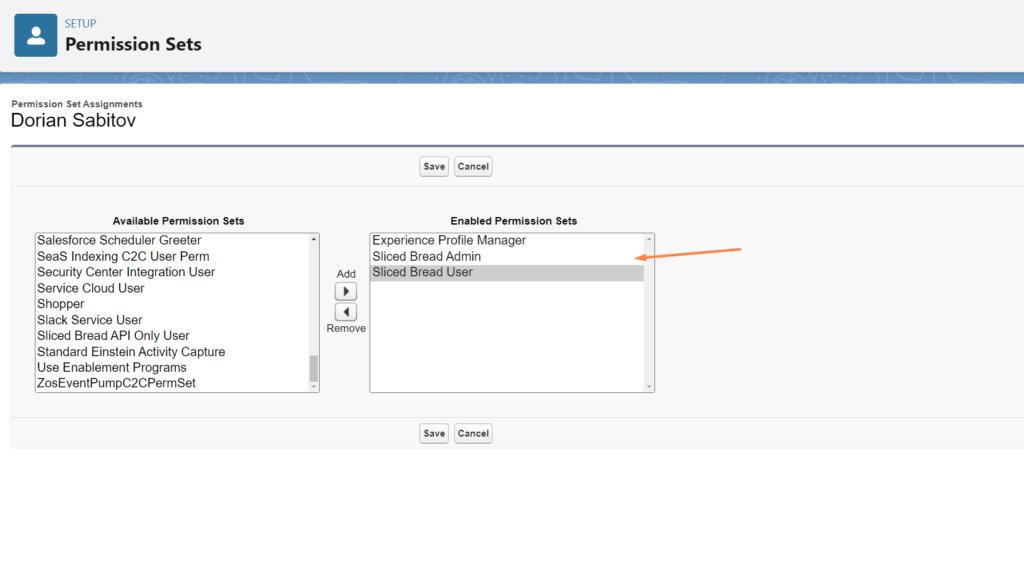
Open the App: From the Salesforce App Launcher, search for “Sliced Bread ETL” and click to open the application.
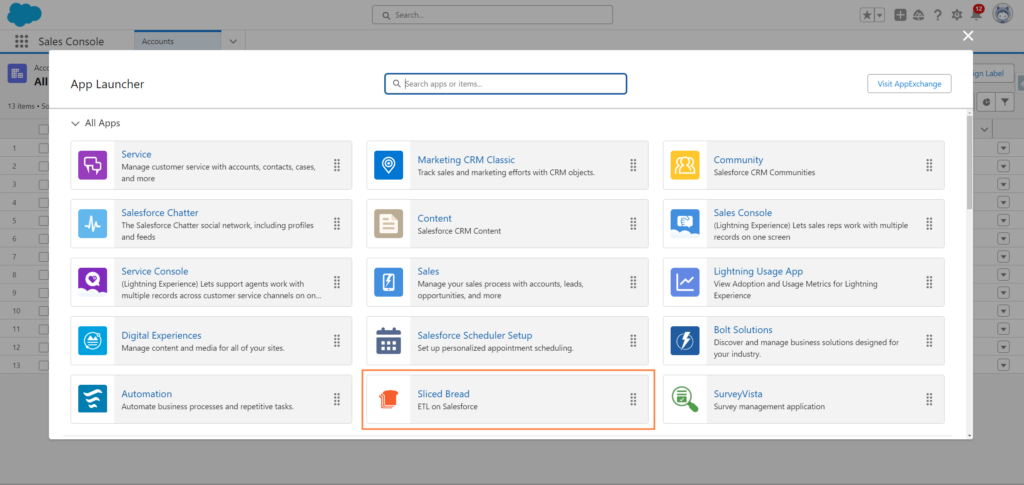
Step 2: Create a New Recipe for Mass Update/Upsert
- Navigate to the “Recipes” tab and click “New Recipe.” This is where you’ll start building your workflow for the update/upsert process.

- Select “Bulk Data Actions” as the recipe type. This ensures that you’re working with mass update actions.
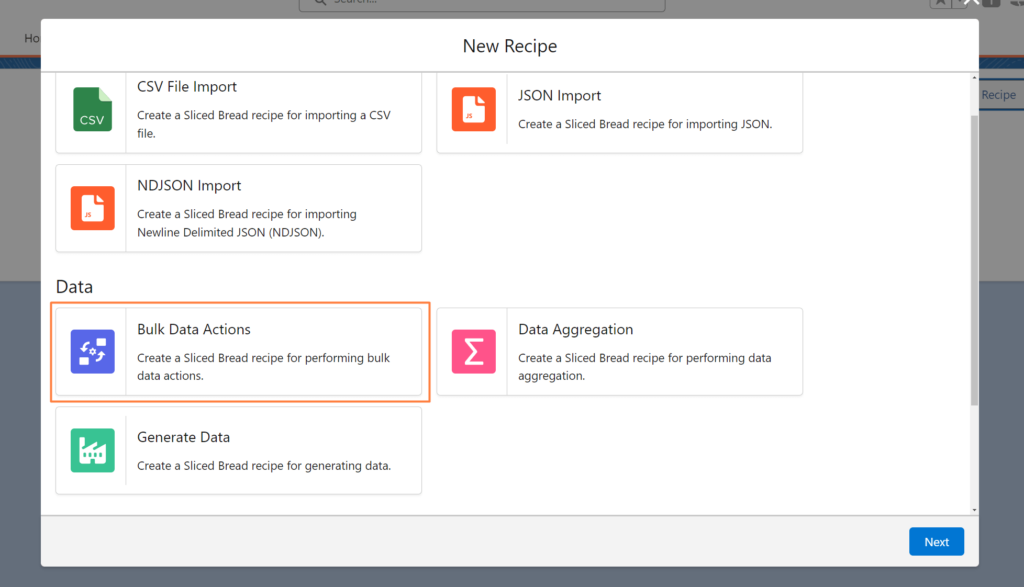
Step 3: Choose the Object and Set the SOQL criteria
- Select the Object: Choose the Salesforce object you wish to update, such as Account, Opportunity, or Contact. This determines which records will be affected.
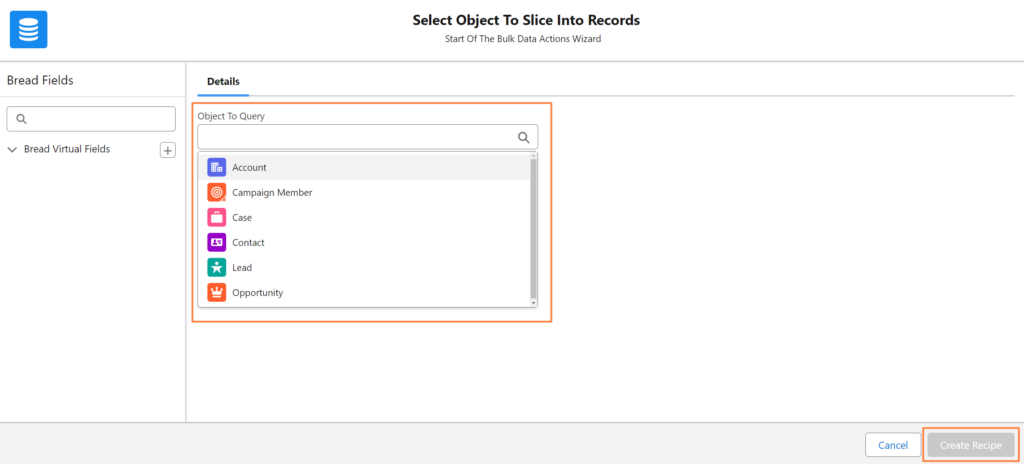
- Set Fields: Add to query fields that you need to get and make necessary changes. For example, I have accounts with employees. Also, you can add criteria to filter and get records that you want to update.
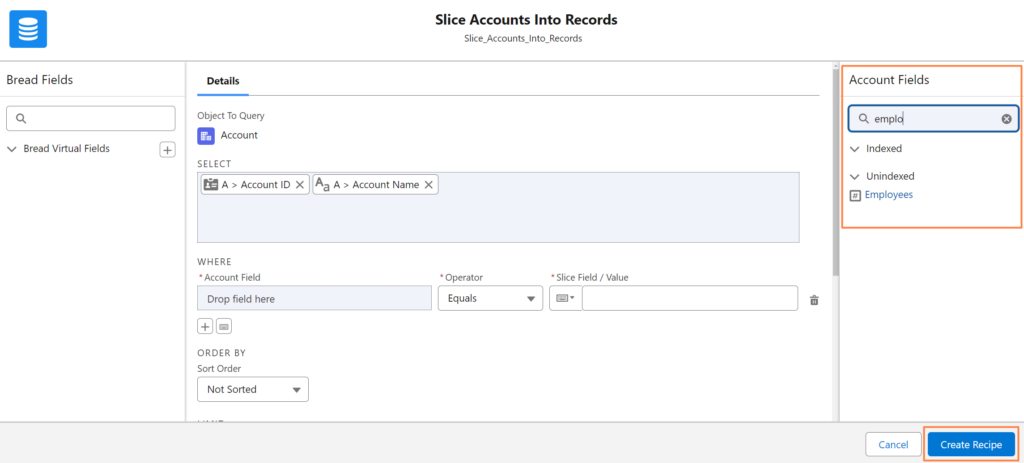
Step 4: Define Fields and Values
- Define Fields: Choose the fields you want to update.
- Create a Value for Update: Once fields are defined, create a value for the field (e.g., 500 employees) to the corresponding Salesforce field (e.g., the “Employees” field in the Account object).
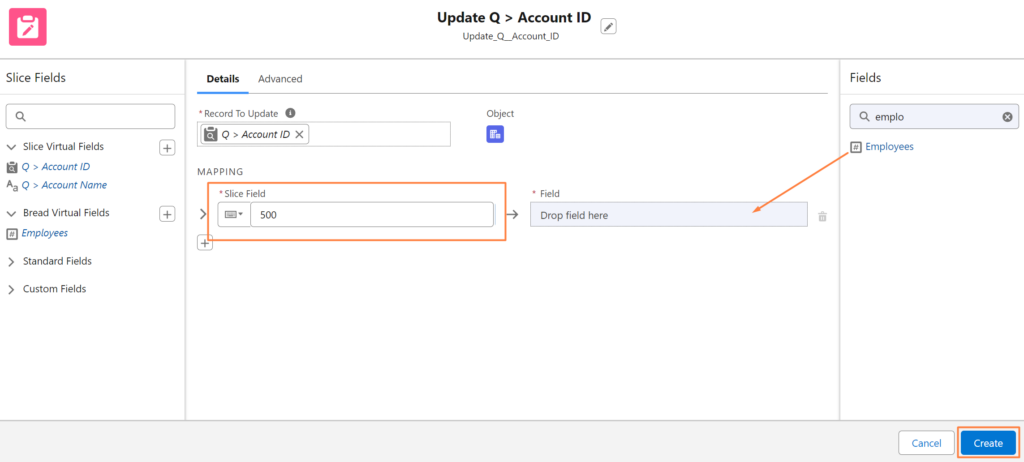
A final look at the Recipe:
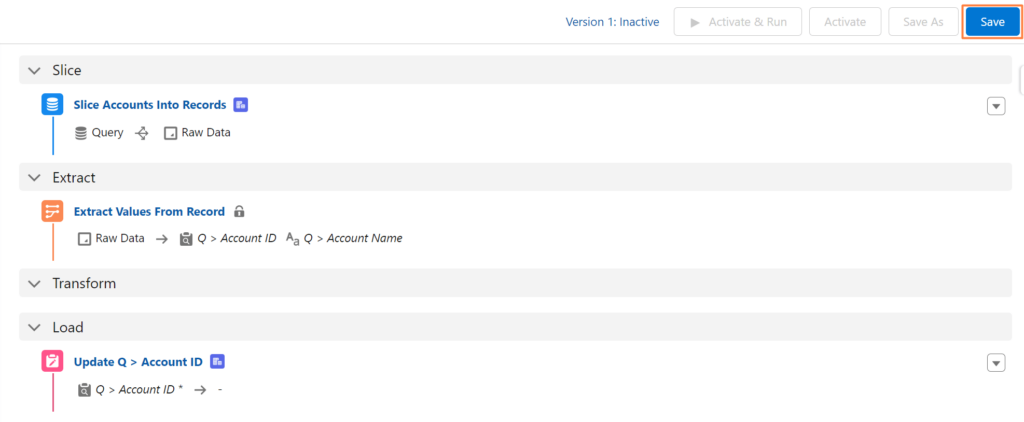
Step 5: Save and Run the Recipe
- Save the Recipe: Give the recipe a meaningful name, like “Account Employees Update.” This helps you track and reuse the recipe for future updates.
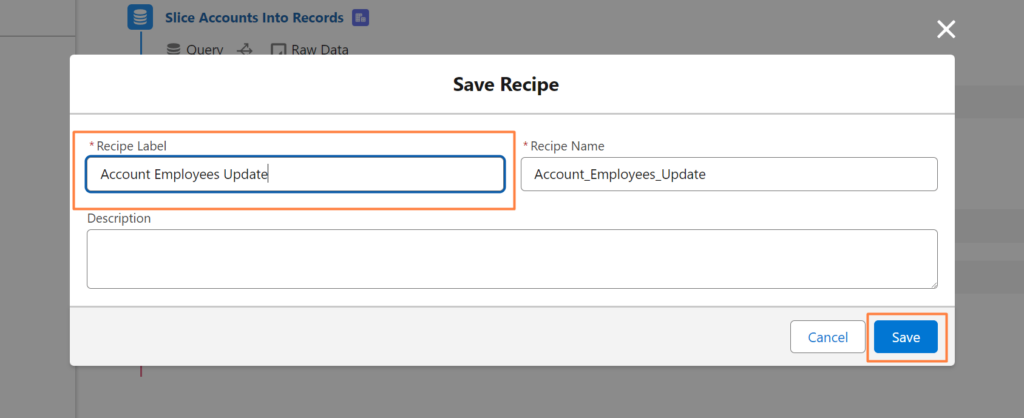
- Run the Recipe: Click “Run” to execute the recipe and start the update process. Alternatively, you can schedule it to run later.
Step 6: Monitor and Review the Process
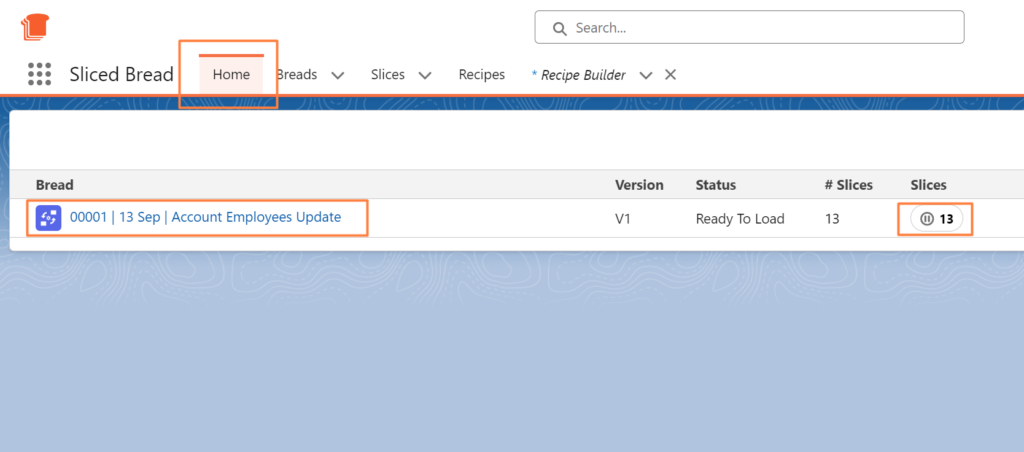
- Monitor Slices: Track the progress of your update using the “Slice Status Counts” section. This shows how many records are processing, ready to load, or have failed.
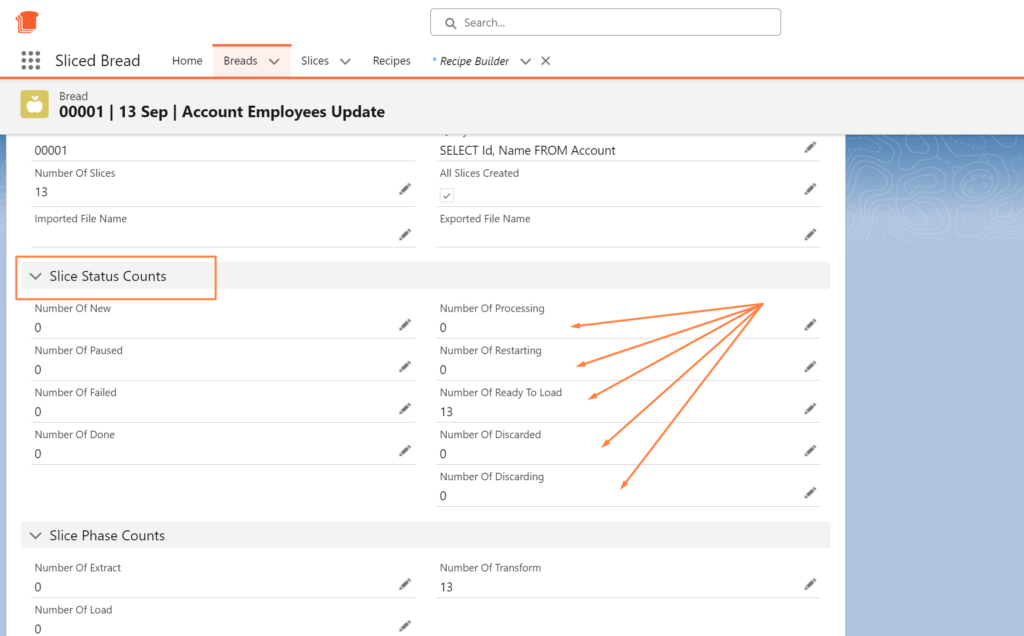
Step 7: Load and Finalize Updates
- Load Records: Once all slices are processed and ready, click “Start Loading” to apply the updates to Salesforce.
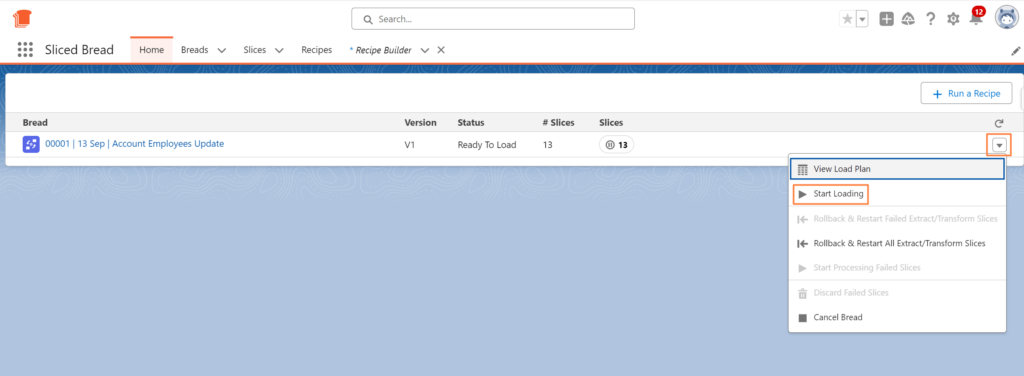
- Verify Updates: Finally, check the updated records in Salesforce to confirm the changes. For instance, in the image, the number of employees has been updated to 500 for the “Burlington Textiles Corp of America” account.
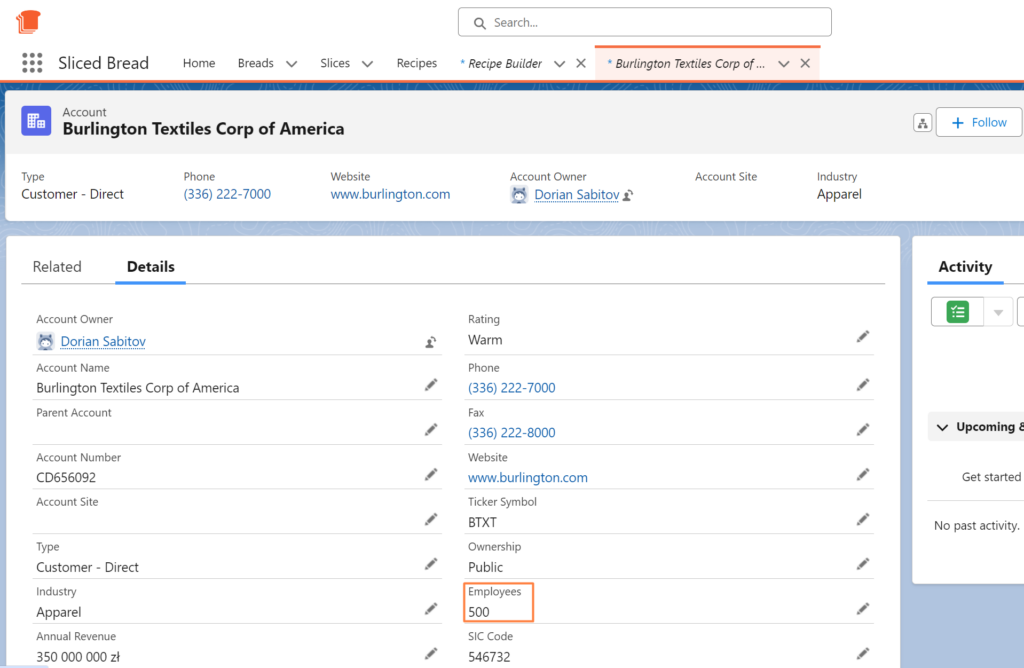
And also for the all Accounts in the Org:
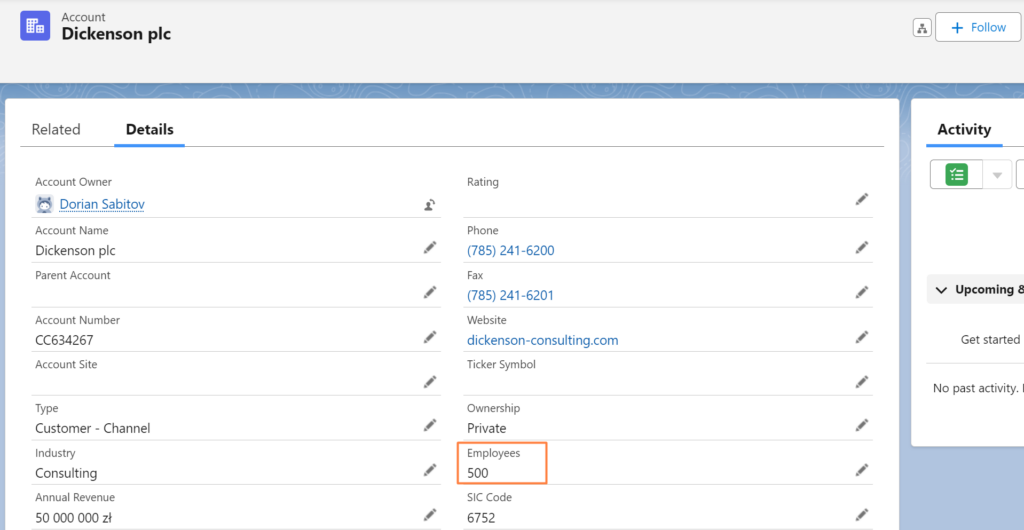
Key Takeaways:
- Always check your permissions before starting the process.
- Sliced Bread ETL simplifies the process of mass updates by providing a user-friendly recipe builder and automation for large datasets.
- You can easily track, monitor, and finalize your bulk updates using slices, ensuring data accuracy with minimal manual effort.
By following these steps, you can efficiently update large volumes of data in Salesforce without manual intervention, saving both time and reducing the risk of errors.
How It Looks Like in Real Life: Improving Data Management with Sliced Bread ETL
Let’s look at a real example to see how Sliced Bread ETL can transform a company’s approach to Salesforce data management.
A mid-sized marketing agency was dealing with a growing number of client records, including leads, campaign data, and customer feedback. Every week, the team had to update and upsert hundreds of records in Salesforce. They were using Salesforce’s Data Loader for updates, but the process was slow, and errors like duplicate entries and incomplete updates were common.
The Challenge
The agency’s marketing team faced several issues:
- Time-Consuming Process: Manual updates took hours each week, which slowed down the team’s productivity.
- Data Inaccuracies: Frequent mistakes in the updates led to inconsistent data, making it difficult to track the progress of marketing campaigns and client engagements.
- No Automation: Without any automation, the team had to repeat the same steps over and over, which was inefficient and prone to errors.
The Solution
The agency switched to Sliced Bread ETL to manage their bulk updates and upserts in Salesforce. The tool allowed them to automate their data processes, handle large datasets, and ensure that their records were always accurate and up-to-date.
Here’s what they did:
- Automation: By using the automation features in Sliced Bread ETL, the team was able to set up recurring updates for their client and campaign data. For example, they created a simple workflow that automatically processed new leads from marketing campaigns and upserted them into Salesforce. This reduced the need for manual data entry and saved the team hours each week.
- Error Handling: Sliced Bread ETL’s built-in error handling ensured that any issues, such as duplicate records or incomplete data, were flagged before the records were upserted into Salesforce. This significantly improved the quality of their data and reduced the number of errors in their system.
- Handling Large Data: The team could now update thousands of records in one go without worrying about file size limits or slowing down the system. With Sliced Bread ETL, they could process large amounts of data in minutes instead of hours.
The Results
By switching to Sliced Bread ETL, the marketing agency achieved several key improvements:
- 40% Reduction in Time Spent on Data Management: Automation and streamlined bulk updates cut down the time spent on managing data from several hours to just minutes.
- Improved Data Accuracy: With error handling in place, the agency saw fewer mistakes in their records, which helped them make better decisions based on accurate data.
- Increased Team Productivity: The team could now focus on more strategic tasks, like improving campaign performance, rather than spending hours updating data manually.
Real-Life Impact of Using Sliced Bread ETL
Switching to Sliced Bread ETL made it much easier for the agency to handle Salesforce mass update records. By automating the process, they saved over 40% of the time they previously spent on data management, reducing errors and improving accuracy.
The ability to perform bulk update records in Salesforce helped the agency track its marketing campaigns better. With accurate and up-to-date data from mass update Salesforce tasks, they saw a 15% increase in client engagement. The tool allowed them to understand which strategies were working best, thanks to cleaner, more reliable data.
Handling large datasets was no longer an issue, as Sliced Bread ETL streamlined the process for bulk updates in Salesforce. Whether they needed to refresh contact details or modify account statuses, the Salesforce mass update tool made these tasks quick and easy, giving the team more time to focus on important business activities.
This experience shows how effective tools like Sliced Bread ETL can transform data management, making Salesforce mass updates faster, more efficient, and error-free.
Wrapping Up
Managing large volumes of data in Salesforce can be a real challenge, especially when it comes to handling mass updates or upserts. From keeping customer details up-to-date to merging duplicate accounts, businesses often struggle with the time and effort required for these tasks. While Salesforce provides native tools like Data Loader and Data Import Wizard, these solutions often fall short when handling more complex tasks or larger datasets.
This is where tools like Sliced Bread ETL prove to be invaluable. By automating the process of bulk updating Salesforce records, the tool makes it easier to manage large datasets without manual intervention. The tool’s advanced features — such as error handling, data validation, and the ability to handle mass merge accounts in Salesforce — make it a reliable solution for businesses of all sizes.
Using Sliced Bread ETL not only streamlines Salesforce bulk updates but also ensures that your data remains accurate. Whether you’re performing a mass update of opportunities in Salesforce or conducting a mass update of records in Salesforce, Sliced Bread ETL simplifies the process. Businesses can benefit from mass updates in Salesforce by avoiding the errors and delays that typically occur with manual data management.
A major advantage of using Sliced Bread ETL is its ability to handle large data sets, allowing companies to bulk update Salesforce records in a matter of minutes, even when working with thousands or millions of entries. This reduces the time spent on data management and improves accuracy. In addition, its automation capabilities mean that mass updates in Salesforce can be scheduled and carried out without manual input, making it easier for businesses to keep their systems updated in real-time.
If your business is struggling with handling bulk updates in Salesforce or mass merging accounts, adopting a tool like Sliced Bread ETL can make a big difference. It simplifies the process, saves time, and ensures that your data remains clean and accurate. Whether you need to mass update opportunities in Salesforce or manage bulk updates of records, Sliced Bread ETL is a powerful solution that can improve your overall data management. By switching to an automated and scalable tool like Sliced Bread ETL, you not only improve efficiency but also ensure the quality of your data, allowing your business to grow and scale with confidence. For companies facing large-scale data tasks, the solution on how to mass update records in Salesforce becomes simple and efficient with Sliced Bread ETL.

Dorian is a 6X Certified Salesforce Developer and Administrator with a start in the IT world as a CRM Admin in 2020. Since diving into Salesforce in 2021 via Trailhead and Focus on Force, he has achieved a Ranger Rank, earned several Superbadges, and bagged certifications including the Salesforce Certified Administrator, Platform App Builder, Associate and Platform Developer I by 2023. In 2024 he also became Salesforce Certified AI Associate and earned Certified AI Specialist Certification in 2025. Dorian is very keen on continuous learning, always looks for fresh ways to improve his knowledge. He enjoys running, boxing, kickboxing and reading diverse kinds of books in his free time.


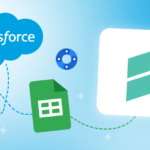 Previous Post
Previous Post Next Post
Next Post